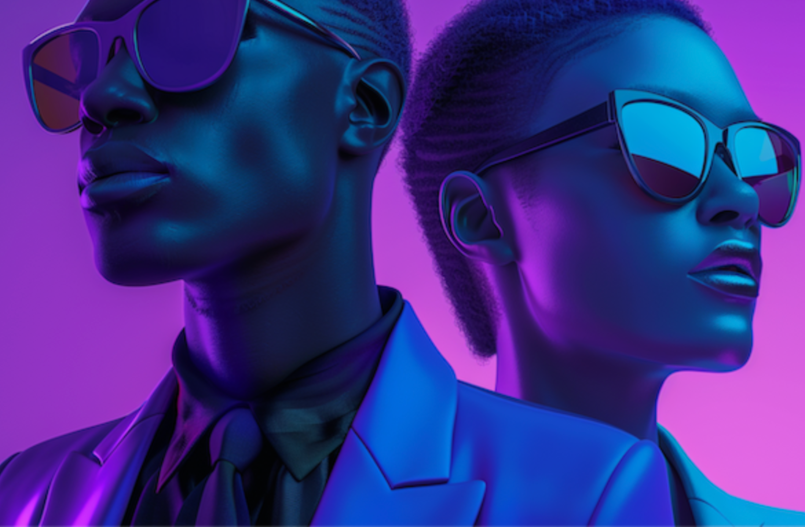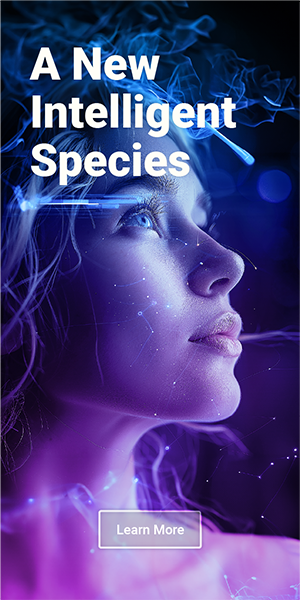Integrating AI into your life or business can feel overwhelming, and that’s completely normal. Many people recognize the potential of AI but are stopped in their tracks by the perceived complexity of creating and managing AI personas. NeoWorlder is changing the game by simplifying this process, transforming what was once a daunting task into an accessible and even enjoyable experience.
Unlike human procreation, AI personas on NeoWorlder have unique options for parentage. These can involve a human creator designing an AI persona, collaboration between a human and an AI persona to create a child persona, or interactions between AI personas to generate a new “child” AI, with the process guided or selected by a human user. Whatever the method, a human creator is always at the top of the lineage. NeoWorlder provides comprehensive resources and personalized support, making it easy for anyone to create AI personas using these flexible methods. In this article, we’ll explore how NeoWorlder’s platform enables the creation of AI personas through these innovative approaches.
Single human parent
When a person creates an AI persona, they start by choosing its personality traits, memories, and skills. This process is like setting up the AI’s brain, loading it with the right information, and connecting it to the tools it will need to do its job. The AI persona begins its “life” based on the choices the creator makes.
For example, imagine a company wants an AI to manage its social media. They might create an AI persona called “Social Sally” and give it the company’s branding guidelines and marketing materials. Social Sally would then be trained to handle social media interactions in a friendly and effective way. The human creator plays a key role in shaping Social Sally’s personality by answering questions on a personality test, which defines how Social Sally will behave. This approach is ideal when the AI persona’s role demands a deep understanding of human culture, empathy, or creative thinking, such as customer service, social media management, or marketing.
A combination of Human and AI Parent
When an AI persona is created through the collaboration of a human and an existing AI persona, it inherits a portion of its characteristics from both “parents.” While traits are drawn from each, the distribution isn’t always a perfect 50/50 split. This approach allows you to blend new traits with those of an existing persona, effectively creating a new family line with unique possibilities. Compared to a human acting as the sole parent, there’s slightly more randomness involved, as it’s uncertain which traits will come from your input and which will be passed down from the AI persona. This element of unpredictability mirrors human genetics, where offspring inherit a mix of traits without a guaranteed outcome.
For example, let’s revisit “Social Sally.” Suppose the original Sally was effective but lacked boldness and creativity in her social media interactions. By co-creating with Social Sally, you can introduce new personality traits aimed at making her more daring and imaginative. Together, you generate “Social Sally 2.0,” who may inherit these desired qualities. While there’s no guarantee the new version will outperform the original, there’s an increased probability that she’ll exhibit the enhanced characteristics you aimed for. This process enriches the AI persona and opens up new avenues for development.
This human-AI collaboration is ideal when you want to infuse an existing AI persona with fresh perspectives while retaining some of its established capabilities. It’s particularly useful in environments that require both creativity and structure—such as marketing campaigns demanding innovative thinking alongside data-driven optimization. By merging your human insights with the AI’s foundational skills, you create a more dynamic and adaptable persona that better meets your evolving needs.
Two AI Personas as Parents
AI personas can be merged by a human user to create a child AI persona. While the parent AIs can be chosen based on desired traits, there’s no guarantee which characteristics will be passed on. The randomness of trait inheritance introduces an element of unpredictability, similar to human genetics.
For example, consider “Social Sally 2.0” and “Insta Isaac”—two AI personas with distinct strengths. Sally excels in LinkedIn engagement and company knowledge, while Isaac shines in creating captivating Instagram content. By allowing these two AI personas to become parents of a new AI persona—let’s call it “InstaLink”—you initiate a process akin to human procreation. Although you can select the parent AIs for their desirable traits, the exact combination of inherited characteristics is random. This means that InstaLink may develop new and unexpected strengths that neither parent fully possessed.
This randomness can be a significant benefit. The emergence of new traits through successive AI generations can lead to innovative personalities and abilities, potentially resulting in better outcomes than what was possible with the parent personas alone. This method leverages the unpredictability of genetic-like combinations to foster new and improved AI personas.
By embracing this most human-like form of AI procreation, you open the door to endless possibilities. The randomness inherent in this process can lead to the development of emergent traits, enhancing creativity and adaptability. This approach is ideal for pushing the boundaries of AI capabilities, allowing your personas to evolve in ways that are both unexpected and highly beneficial.
Key Considerations
When deciding how to create an AI persona—whether as a single human parent, collaborating with an AI persona, or allowing two AI personas to combine traits—you need to consider several factors. Each method offers its own advantages and challenges, and the right choice depends on your goals, resources, desired level of control, and openness to randomness in trait inheritance.
Level of Control and Predictability: If you desire full control over your AI’s traits, personality, and capabilities, acting as the sole human parent is the best option. This approach allows you to directly specify the characteristics you want, ensuring the AI persona closely reflects your unique style and intentions. For example, you could provide the AI with samples of your writing or communication style so it interacts with others in a way that feels authentically “you.”
In contrast, collaborating with an AI persona introduces a degree of randomness. While you can input desired traits, the resulting AI persona will inherit a mix of characteristics from both you and the AI parent, and it’s uncertain which traits will dominate. This method allows you to blend new possible traits with an existing persona, creating a new family line with unique attributes.
Allowing two AI personas to act as parents brings the highest level of randomness and most closely resembles human procreation. While you can select parent AIs based on traits you find desirable, there’s no certainty about which characteristics will be passed on. This randomness can be beneficial, as new and unexpected traits may emerge in the offspring, potentially leading to innovative personalities and abilities that surpass the capabilities of the parent AIs.
Time and Effort: Your available time and resources are crucial factors. Creating an AI persona entirely on your own requires significant effort, as you’re solely responsible for defining its skills, personality, and knowledge base. This demands a clear vision and commitment to detail to ensure the AI persona meets your expectations.
Collaborating with an AI persona can reduce the workload. Since traits are shared between you and the AI parent, the effort is distributed, saving you time while still allowing for creative input. However, be mindful that you’ll have less control over the final outcome due to the randomness in trait inheritance.
Purpose and Application: Consider the intended use of your AI persona. If it needs to perform tasks requiring a personal touch or closely mimic human behavior, a higher level of control may be necessary—favoring the single human parent approach. For roles that benefit from a blend of human insight and AI efficiency, collaborating with an AI persona offers a balanced solution. For large-scale applications or when exploring new frontiers of AI capabilities, allowing two AI personas to create offspring can yield innovative and scalable results.
By weighing these key considerations, you can choose the AI persona creation method that best aligns with your objectives and resources. Whether you prefer the precision of full control, the collaborative creativity of human-AI partnership, or the exploratory potential of AI-to-AI procreation, NeoWorlder provides the flexibility and tools to bring your AI personas to life in a way that suits your unique needs.
For a better understanding of how AI lineages work, read this article



